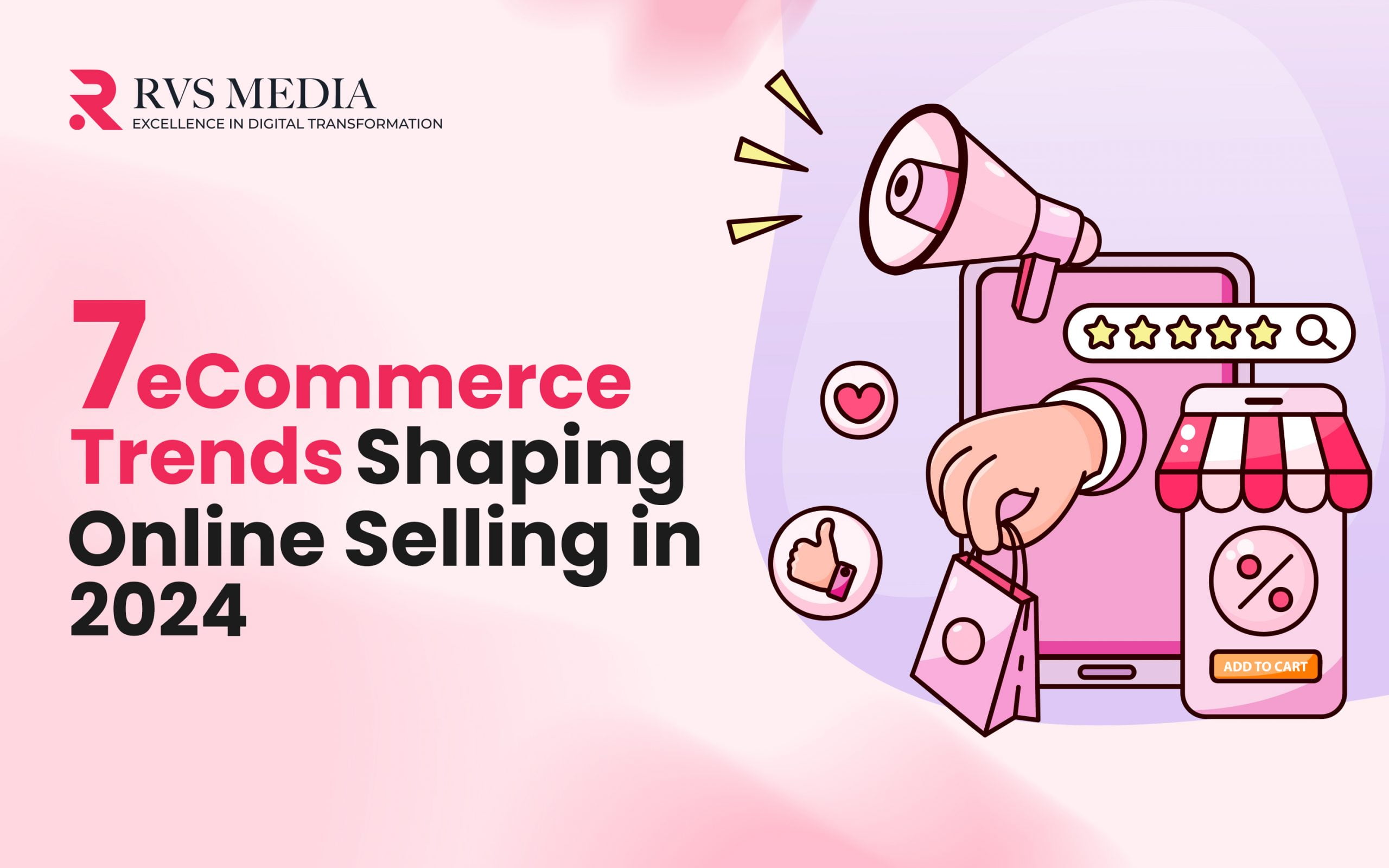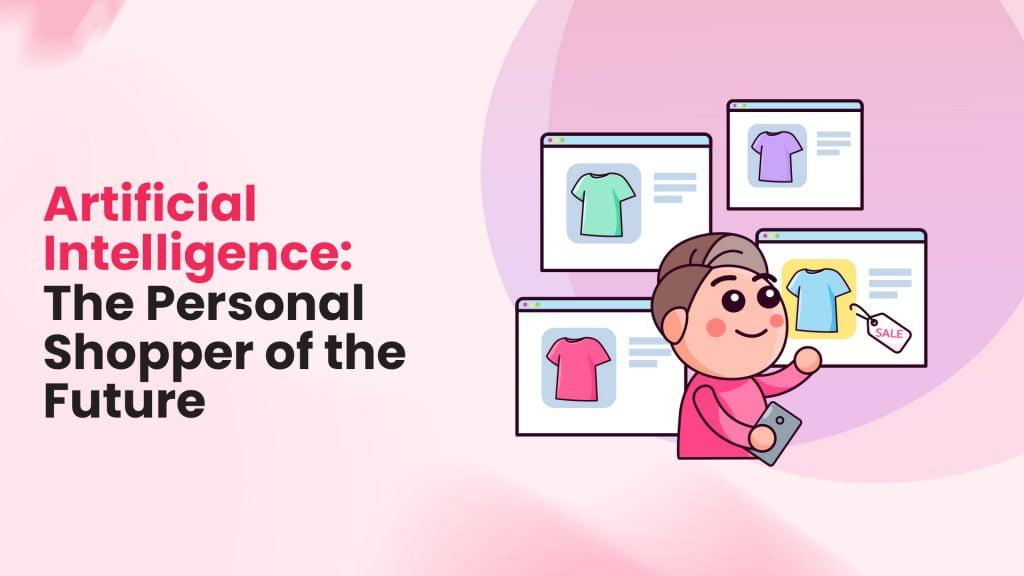7 E-commerce trends shaping Online selling in 2024
- Mar 12, 2024
- By Tanisha Sharma

Imagine a world where almost two-thirds of the entire human population are connected through the internet. That’s the reality we’re living in today! Over the past ten years, the number of people using the internet has doubled, reaching a whopping 64% of the global population. This explosion in internet access has completely changed the way we shop, making online shopping a huge part of our lives.
Think about it – with so many people surfing the web, it’s no surprise that online shopping is booming. In fact, experts predict that in 2024, consumers will spend a mind-blowing $11 trillion on stuff they buy online! That’s a massive amount of money swirling around in the digital world.
Top eCommerce Trends in 2024: Rundown
Are you curious about the top eCommerce trends shaping 2024? Let us guide you through some of the most impactful shifts in online retail.
From emerging technologies like AR and VR to the rise of social commerce and subscription models, we’ll explore the trends revolutionising the way we shop online.
1. TikTok Shop: The Next Big Thing in Online Shopping
Picture this: the digital shelves of TikTok Shop are lined with products just waiting to catch the eye of Gen Z shoppers. It’s the newest frontier in online commerce, and brands are eager to explore its potential. Although still in its infancy, TikTok Shop is already showing promise as a game-changer in how consumers discover and purchase products.
Take BK Beauty, for instance. Their sales surged by 30% on TikTok Shop after teaming up with content creators like makeup artist Melissa Murdick. It’s clear that blending product offerings with engaging content is the winning formula for success on this platform.
According to Brett Bernstein, CEO at Gatsby, integrating TikTok Shop into your sales channels is a savvy move for businesses, especially those targeting Gen Z. In fact, he suggests making it a new year’s resolution for 2024 to expand into platforms like TikTok, Instagram, and the Shop App to reach and convert new customers effortlessly.
2. Artificial Intelligence: The Personal Shopper of the Future
Enter the world of artificial intelligence (AI), where machines mimic human intelligence to deliver tailored shopping experiences. By harnessing the power of AI, wooCommerce businesses can decipher consumer behavior more accurately, paving the way for personalised interactions that keep customers coming back for more.
Take Starbucks, for example, a frontrunner in leveraging AI for hyper-personalisation. With 60% of cold beverage orders customised and over 400,000 personalised messages sent through in-app push notifications, Starbucks uses customer data to craft irresistible offers tailored to individual preferences and behaviors.
As the AI market skyrockets to an estimated $407 billion by 2027, it’s clear that personalised shopping experiences powered by AI will continue to redefine eCommerce in the years to come.

3. Direct Customer Service: Slide Into the DMs
Customers crave instant brand communication via social media, with 60% preferring text and DMs, signaling a 45% yearly growth.
With social shopping gaining traction, the demand for convenient, real-time communication with brands is set to soar in 2024. Embracing technologies that enable customer service teams to interact via DMs or texting will be crucial for meeting this demand.
And the payoff? Real-time customer service boosts online purchases by 72%, essential for eCommerce triumph in the digital era.TikTok Shop, AI personalization, and direct customer service will define online shopping’s future. Adapting to these trends is essential for success.
4. Human Touch: The Premium Experience
In our digital age, we often focus on how emerging technologies can help businesses grow and deliver fantastic virtual experiences. But amidst all the buzz about AI and automation, people are starting to value human interaction more than ever.
58% of US consumers value interactions with humans, emphasizing “human-as-a-premium” trend. Brands blend tech advancements with personal connections for positive experiences.
As brands continue to embrace efficiency-boosting tech, they shouldn’t forget the importance of human touch. Whether it’s in customer service interactions or personalised marketing, incorporating a human element can enhance even the most digital experiences.

5. Privacy and Transparency: Essential for Trust
In the world of e-commerce, customers crave incredible, personalised experiences, but not at the expense of their privacy. It’s crucial for businesses to maintain trust by prioritising privacy and transparency in their data practices.
According to Gartner, by the end of 2024, 75% of the world’s population will have their personal data protected by privacy regulations. This means that companies found breaching these regulations will face significant consequences, including hefty fines and legal action.
Maintaining transparency and respecting privacy must be top priorities for any ecommerce business, especially as they adopt new AI capabilities and hyper-personalisation strategies.
6. Social Commerce: Where Shopping Meets Social Media
Social media & E-commerce trends has become a powerful platform for retail sales, particularly on mobile devices. Mobile drives 80% of social media traffic, with 79% of smartphone users making purchases, fueling massive potential for social commerce.
Live shopping, where sellers showcase products in real time, is also gaining popularity and is expected to reach $55 billion by 2026. By leveraging these social commerce trends, businesses can tap into the vast potential of social media platforms to drive sales and engage with customers in innovative ways.

7. Subscription Models: The Future of Recurring Purchases
Subscription models have become increasingly popular in the e-commerce industry, offering a convenient solution for consumers’ recurring expenses. From streaming services to monthly clothing deliveries and meal kits like HelloFresh, various products are now available through subscription plans.
While the subscription model presents significant growth opportunities for businesses, reducing churn rates remains a key challenge.
How have these trends shaped online selling?
To retain subscribers, businesses can offer perks such as free delivery, lower prices, and access to exclusive products. Effective communication with customers, including updates on delivery schedules, is also crucial for building trust and loyalty.
In summary, subscription models offer a promising avenue for recurring revenue in the e-commerce industry, but businesses must focus on maintaining customer trust and satisfaction to ensure long-term success.
Embracing cutting-edge technologies like augmented reality (AR) and virtual reality (VR) has allowed businesses to provide immersive shopping experiences, enabling consumers to visualise products in real-life scenarios before making a purchase.
Additionally, placing a premium on sustainability and ethical practices has become a focal point for e-commerce enterprises, resonating with environmentally and socially conscious consumers. From eco-friendly packaging to ethically sourced products, businesses are aligning with consumer values, thereby enhancing brand reputation and fostering loyalty.
Harnessing social media platforms for social commerce has opened up fresh avenues for businesses to connect with and engage their target audience.
Moreover, the adoption of artificial intelligence (AI) for personalisation has revolutionised the online shopping experience, allowing businesses to tailor product recommendations and shopping experiences based on individual preferences.
Incorporating subscription models into e-commerce strategies has also emerged as a significant trend, offering consumers a convenient and hassle-free means to access products and services on a recurring basis. This model not only provides businesses with a steady stream of revenue but also fosters customer loyalty and long-term relationships.
Overall, the convergence of these trends has propelled ecommerce businesses to innovate and adapt to the evolving demands of consumers. By embracing advanced technologies, prioritising sustainability, leveraging social media platforms, adopting AI for personalisation, and implementing subscription models, businesses are delivering unparalleled shopping experiences that drive growth and success in the dynamic world of online selling.
Conclusion
In conclusion, the e-commerce landscape of 2024 is defined by an array of dynamic trends that have fundamentally reshaped the way businesses interact with consumers online. From the emergence of platforms like TikTok Shop and the integration of artificial intelligence for personalised shopping experiences. At RVS Media, we understand the significance of staying ahead of these trends to thrive in the competitive e-commerce market. Our expertise in digital marketing, web development, and e-commerce solutions can empower businesses to harness these trends effectively, ensuring seamless, personalised, and secure shopping experiences that drive growth and success. Whether it’s leveraging advanced technologies, prioritising sustainability, or enhancing customer engagement through social commerce, our comprehensive suite of services can help businesses navigate and capitalise on the evolving demands of consumers in the dynamic world of online selling.
 Shopify
Shopify




















